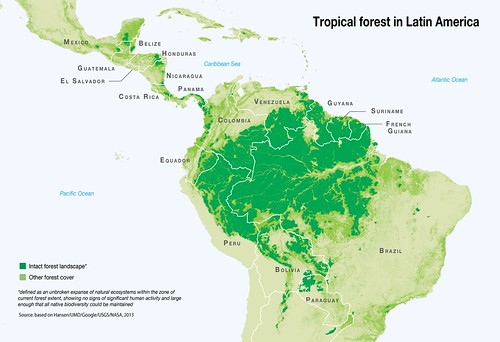
Monstera Roots, Leaves, and Survival: A Rainforest Evolution Story
Ever wondered why Monsteras grow those iconic aerial roots or develop uniquely patterned leaves? Dive into the fascinating story of how this tropical favorite evolved in the mysterious soils and climate of Central American rainforests. Discover surprising connections between rainforest soil, root structures, and the secrets behind Monstera’s incredible survival and growth.
PLANT SCIENCE
Akanksha Nigam
8/2/20253 min read
Do You Know Why Monsteras Grow Roots in the Air?
Ever stared at a Monstera and wondered why it sends thick roots crawling out of the pot, climbing up moss poles, or clinging to walls? Or why its massive leaves have deep cuts and holes? These quirks aren’t random; they’re ancient adaptations sculpted by one of the most dynamic ecosystems on Earth: the Central American rainforest.
Native to the Tropics: Mapping Monstera's Origins
Monsteras, especially Monstera deliciosa, are native to the lush tropical rainforests of southern Mexico, Guatemala, Belize, Honduras, Costa Rica, and Panama. If you trace their journey on a map, you’ll see they hug the warm, humid belt of Central America, thriving under the dense canopy of cloud forests and lowland rainforests. This is a region shaped by volcanic activity, heavy rainfall, and biodiversity that rivals the Amazon.
Rainforest concentration in Central America (picture source: Link)
These locations form a moist, nutrient-cycling corridor where monstera has evolved alongside towering trees, constant humidity, and ever-changing terrain
What's Beneath: A Deeper Look at Soil Conditions
The soils of these rainforests are heavily influenced by tropical climatic patterns, intense biological activity, and regional geology. Scientific studies identify a few dominant soil types across Monstera’s native range:
1. Ultisols and Oxisols (Lowland Rainforests)
Highly acidic (pH 4.5–5.5)
Extremely weathered due to centuries of rainfall and decomposition
Low in essential nutrients like phosphorus, calcium, and potassium
High in iron and aluminum oxides, giving soil a reddish hue
Reference: Dixon & Sollins (1992) report that tropical Ultisols often show low base saturation and are prone to nutrient leaching in humid regions.
2. Andisols (Volcanic Highlands)
Derived from volcanic ash
High porosity and water retention capacity
Rich in organic matter and available phosphorus
Common in parts of southern Mexico and Costa Rica
Reference: Shoji et al. (1993) explain how Andisols create a unique ecological niche by supporting high microbial activity and rapid decomposition.
3. Entisols & Inceptisols (Floodplains & Disturbed Zones)
Young soils that form near rivers or landslide-prone areas.
Variable fertility, often enriched temporarily by sediment deposition.
Root Evolution: Survival Through Soil Adaptation
Monsteras’ root systems are not only intricate, but are deeply influenced by the characteristics of these tropical soils. Here's how:
Shallow Roots for Topsoil Scavenging
Root system in Thai Constellation Monstera
In nutrient-poor soils like Ultisols, nutrients are concentrated in the top few centimeters from constant leaf litter decay. Monstera’s horizontal, shallow roots are highly efficient at absorbing these ephemeral nutrients before they’re leached deeper by rainfall.
Aerial Roots as Nutrient and Water Channels
Aerial roots develop to:
Anchor the plant onto tree trunks and vertical surfaces
Absorb moisture and trace minerals from humid air or bark surfaces
Act as secondary nutrient uptake systems, especially when ground soil is depleted
Reference: Hinchee (1976) found that Monstera aerial roots develop specialized velamen-like tissue layers to retain moisture and protect internal vessels.
Adventitious Roots: A Backup Plan
When a Monstera’s stem makes contact with a moist surface (like soil or mossy bark), adventitious roots emerge. These act as adaptive anchors and new absorption points—critical in unstable or shifting terrains like volcanic slopes or landslide-prone forests.
Soil Aeration and Porosity Response
In volcanic Andisols, which have high aeration, Monstera roots are observed to grow deeper and more extensively, optimizing water and phosphorus uptake. These roots grow faster and form a denser network, supported by the soil's light, airy texture.
Rainforest Realities That Sculpted a Species
Living under the rainforest canopy comes with its own set of evolutionary pressures:
Constant Rainfall (2000–4000 mm/year) saturates the soil and leaches nutrients.
High Humidity (>80%) supports aerial root absorption.
Low Light at the forest floor drives upward climbing behavior.
Dense Competition encourages vertical growth and efficient rooting.
Together, these conditions have driven Monsteras to become both climbers and colonizers. Their unique root structures allow them to access scattered resources across different forest levels.
Terrain and Topography
Monstera’s habitats range from:
Rainforest floors enriched with decaying organic matter
Tree trunks for epiphytic anchoring
Limestone karsts and volcanic slopes where shallow nutrient pockets form
This variety in terrain demanded flexibility: roots that could grasp, absorb, stabilize, and regenerate.
Stay tuned for the next part of this series, where we decode how to recreate Monstera’s rainforest magic in your home—giving your plant not just a pot, but a purpose.





